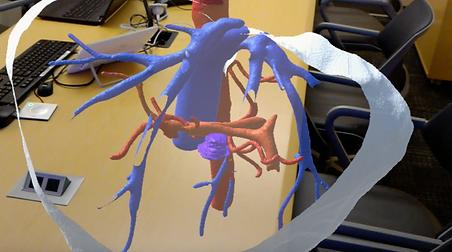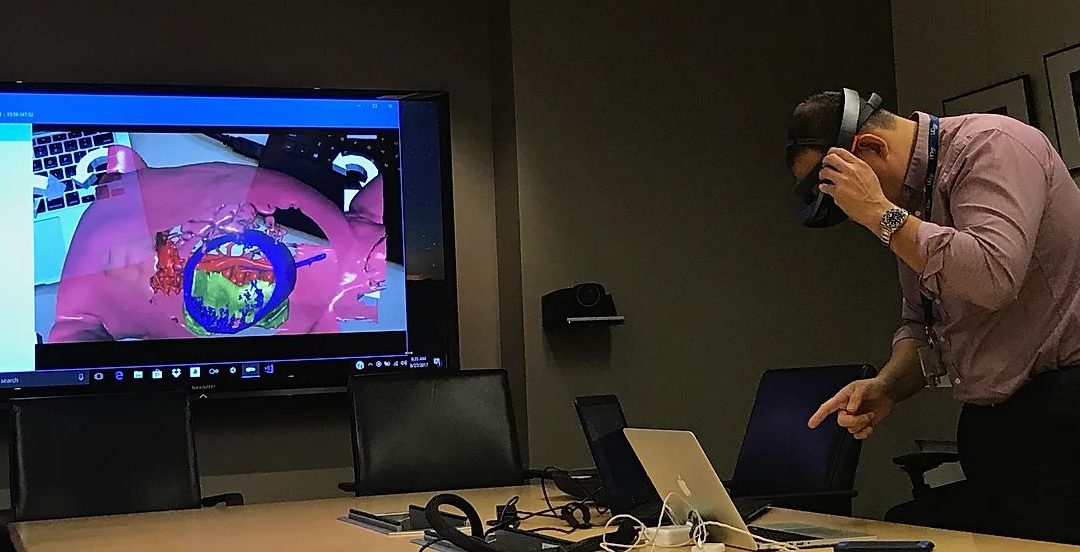From sitting in a reading room filled with light boxes and printed film as a medical student, to now showing my surgical colleagues the 3D holographic images of their patients’ anatomy, I have been witness to the incredible technological advances that have taken place in Radiology in just the past 15 years. I now believe we are at the cusp of yet another exponential transformation in the way we as Radiologists practice our specialty.
Within the past year we have seen a tremendous increase in excitement about the potential for both Augmented and Virtual Reality (AR/VR) applications in the field of Diagnostic Imaging. This is in part due to rapid advances in computer processing capabilities that now allow the type of real-time rendering that would not have been possible a decade ago. The possibilities of moving from 2-dimensional representations to true 3-dimensional patient-specific holographic models are extremely exciting to many of us.
Augmented Reality applications, which I have been working with over the past year, have been particularly exciting to my clinical colleagues. “Wow!” has been the most common reaction from first time users of my HoloLens app RadHA. The possibilities of superimposing patient-specific 3D medical objects onto a real world background have generated new ideas for patient and trainee education, pre-surgical planning, and even intra-operative use.
Our societies have also taken notice. The Radiologic Society of North America will be presenting a new AR/VR showcase space alongside its 3-D printing space this year and there are plans for an AR/VR session at a future meeting of the American Roentgen Ray Society. This will likely lead to a formation of a collaboration between those in academia and those in industry to allow the continued growth and expansion of these applications in Radiology. It is then possible that in the future, our primary means of interpreting images will be 3-dimensional, with “scrolling” through 2-dimensional stacks of images becoming a thing of the past.
This will not, however, be the first time Radiology has undergone rapid technological change (which is honestly what makes the field so exciting to me). The widespread incorporation of Picture Archiving and Communication Systems (PACS) into the Radiology workflow in the early 2000’s allowed images to be rapidly digitized and interpreted. This meant radiologists could read more studies and read them faster. Radiologists had to adapt to faster workflows and re-train their minds from reading images on printed film to scrolling through stacks of hundreds of images in a few minutes. This was accomplished and as new trainees began after the adoption of PACS, the transition appeared almost seamless. Similarly, I believe we as radiologists should be heavily involved in the development of emerging technologies such as Augmented and Virtual Reality at the earliest stages. With development of standardized training protocols for 3D image creation and interpretation and AR/VR software optimization, we are best positioned to lead these fields forward and continue to make Radiology’s future a bright one!
